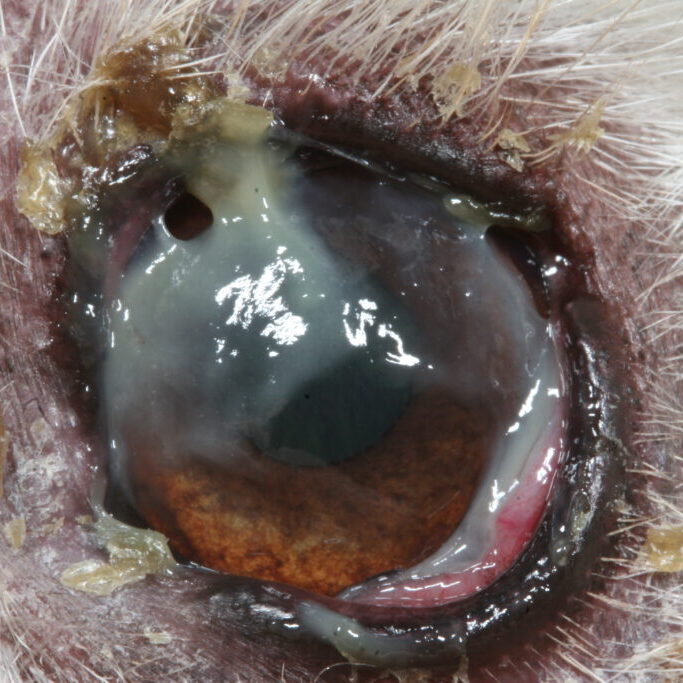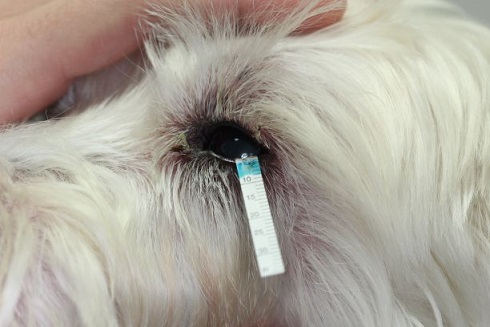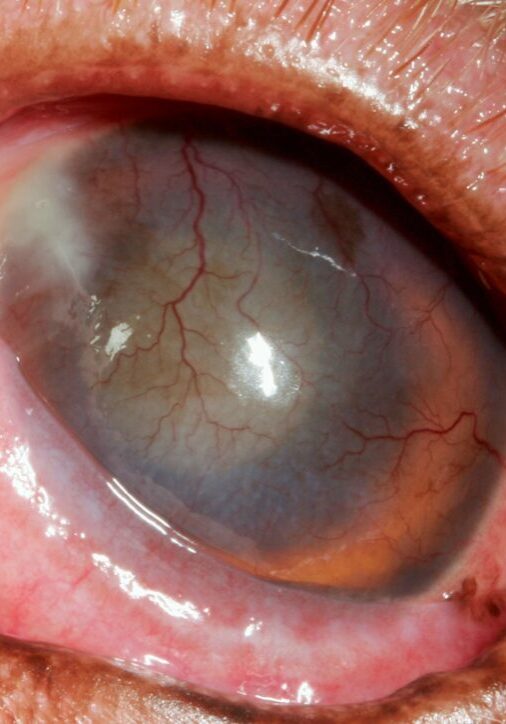Why Should I Bring my Pet to Willows for Dry Eye?
Willows is one of Europe’s leading small animal referral centres. Our state-of-the-art hospital is led by internationally renowned Specialists, committed to providing the highest standards of veterinary care. Our Ophthalmologists are supported by our multi-disciplinary team of Specialists across a number of disciplines including; Anaesthesia, Diagnostic Imaging and Emergency and Critical Care.
Willows also has a large dedicated team of Nurses and clinical support staff available 24 hours a day, every day of the year to provide the best possible care for your pet.
What is Dry Eye?
Dry eye is a term used to describe poor tear production. Tears are essential for the maintenance of a healthy eye. The cornea (the clear window of the eye) is particularly reliant on the tear film for protection, providing lubrication, wetting and nourishment to the cornea and conjunctiva (the pink “skin” that covers the eyelids and the white of the eyeball).

What are the Most Common Causes of Dry Eye?
There are many causes of dry eye, the most common is a reaction of the patient’s own immune system which has been misdirected against the tear glands. The cause of this so called immune-mediated destruction of the tear glands. The prevalence of dry eye is not fully understood, however it appears to occur more commonly in certain dog breeds such as West Highland White Terriers, Yorkshire Terriers, Cavalier King Charles Spaniels, Cocker Spaniels and Bulldogs.
Other causes of dry eye include infection, trauma or as a side-effect of medication. In some patients, tear production is reduced because there is a problem with the nerve supply to the tear glands. Lastly, some dogs are born without tear glands and will never produce tears.
Fig 1: Eye with purulent discharge and ocular redness


What are the Signs of Dry Eye?
When tear levels are low, the eye can start to feel itchy, and a thick, yellow / greenish discharge may develop. Typically, the discharge sticks to the cornea and the eyelids, and will often recur within hours when wiped away. In severe cases of dry eye, open sores (ulcers) may develop in the cornea, which are a painful and vision-threatening problem.
Fig 2: Schirmer Tear Test being performed
How is Dry Eye Diagnosed?
The amount of tears that a patient produces can be measured with the Schirmer Tear Test, by inserting a small strip of paper behind the lower lid. The strip is left in place for one minute and the amount of strip wetted is easily identified as the tears change the colour of the paper strip to blue. Regular tear production in dogs on the Schirmer Tear Test is 15-25mm of wetting. In cases of dry eye, the Schirmer Tear Test can be so severely reduced that no wetting is recorded in some patients.
Most patients with mild dry eye initially have intermittent conjunctivitis (inflammation) which may appear better when antibiotic ointments or drops are applied. However, as the disease becomes more severe, the conjunctivitis will not improve and it becomes chronic. In response to the dryness, blood vessels start to grow into the cornea. With the blood vessels, pigment invades the cornea and the corneal surface becomes thicker and less and less transparent. Dry eyes have little defence to infection and can rapidly develop deep ulcers, which can lead to perforation of the eye. Dry eye is a painful and debilitating condition that, if left untreated, will lead to blindness and possibly even loss of the eye.
Fig 3: Marked neovascularization (corneal blood vessels) and corneal pigmentation in an advanced case of dry eye

What Treatments are Available if my Dog has Dry Eye?
Medical treatment:
In most cases of dry eye, treatment is aimed at stimulating the tear glands to produce more of the dog’s own tears. This is usually achieved by using an immunosuppressive agent. In addition to stimulating tear production, the drug helps to reverse the immune-mediated tear gland destruction. An immunosuppressive agent is initially dispensed in the form of an eye ointment at a concentration of 0.2% for up to six weeks. After which, if no improvement is seen medication can be changed to a higher concentration (up to 2%). Different types of immunosuppressive agents are used in combination with artificial tears in the management of dry eye. In the majority of patients it is necessary to apply medical treatment with immunosuppressive agents for life, and the disease may become less responsive over time.
In some cases where dry eye is associated with nerve damage, alternative treatments may be used. In addition, CT scan or an MRI scan may be suggested for some patients with nerve involvement.
Surgical treatment:
If medical treatment is not successful, a surgical treatment termed Parotid Duct Transposition can be carried out. In this procedure, the tube that carries saliva from the salivary gland below the ear, to the mouth is moved and surgically stitched into the pocket inside the lower. The saliva produced then wets the eye and helps to keep it sighted and comfortable.
Whilst the operation can be a big help for many patients that cannot be medically managed, it is not a perfect answer to the problem of dry eye. Patients who have undergone surgery may need to be managed by regular frequent bathing around the eyes, and a small percentage may still require additional long-term medical management.
To save this page as a PDF, click the button and make sure “Save as PDF” is selected.
Ophthalmology
Find out more
To assist owners in understanding more about Ophthalmology we have put together a range of information sheets to talk you through the some of the more common conditions seen and treated by our Specialists.

